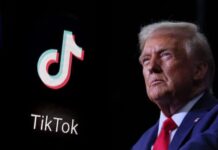Pressure on the job market is increasing, as jobless claims have gone up for two consecutive weeks. The number of new unemployment claims released by the government went up in early June, putting worries about a sluggish job market on the rise. These statistics are being closely studied by economists, as a further rise in claims can show that the economy’s strength is weakening. The new spike in claims comes after months of steady hiring, which may make it harder for the Federal Reserve to handle interest rates and stabilize the economy.
The increase in unemployment claims should be worrisome when you see that several companies in technology, retail, and manufacturing are downsizing their employees. Although the unemployment rate is low, the rise in claims shows that people in certain industries, such as those connected to smaller and medium-sized companies, could lose their jobs soon.
Also read: Trump’s Awkward D-Day Remarks to German Chancellor
Job Openings Rebound but Layoffs Spike
Even though initial jobless claims rose, the number of job openings in the country went up in April, as reported by the U.S. Labor Department. At the same time, there was a sharp increase in layoffs, rising by more than 190,000 in September—this was the highest monthly layoff increase since the early days of the pandemic. The fact that new jobs are being created while others are being lost proves that the recovery is not the same for everyone, and many people are still dealing with challenges.
Sectors like healthcare, government, and professional services hired for more positions, but other industries saw many jobs disappear. Since borrowing rates are up, along with fewer sales and issues in the supply chain, lots of small and medium-sized companies have chosen to let staff go or stop taking on new employees.
Tariff Threats Add to Economic Anxiety
Now, there is more unpredictability in the economy as tariffs and international trade policies are being talked about a lot. Firms are worried that additional tariffs on key imports might cause inflation and lower demand to worsen. Many experts say that by applying trade restrictions, the price of American companies’ supplies would rise, their profitability would fall, and they might have to cut their workforce if they need to make changes in production or move overseas.
There is now more market uncertainty because of issues related to tariffs and world trade. Since the latest election concluded and new policies are under consideration, many companies remain unsure about the possible changes to their supply processes, approach to investing, and approach to hiring. Therefore, this state of affairs leads business owners to be less confident and affects how many jobs will be available in the future.
Federal Reserve Faces New Dilemma
The latest changes in the labor market present a fresh dilemma for the Federal Reserve, which aims to avoid a recession when guiding the economy. If more layoffs and rising joblessness lead to a fall in consumer spending, the Fed may decide to change its current decision on interest rates.
However, since inflation has not yet been completely tamed, the central bank is being careful with making big changes. Now, it is important for policymakers to help the labor market while reducing inflation. A mistake along the way could cause inflation to increase or plunge the economy go down into a deeper slump.
Outlook for the Months Ahead
Everyone will be monitoring employment figures that will be released as the summer approaches in the U.S. Analysts are interested in checking if more people are losing jobs and whether job creation can equal it. Many external reasons, such as world conflict, changes in how countries trade, and what people choose to buy, keep making the situation uncertain.
For now, the labor market is sending mixed signals—growth in some areas, stress in others—and economic leaders will need to act with care. Whether the current trends are a temporary slowdown or the beginning of a more serious labor market correction remains to be seen.








